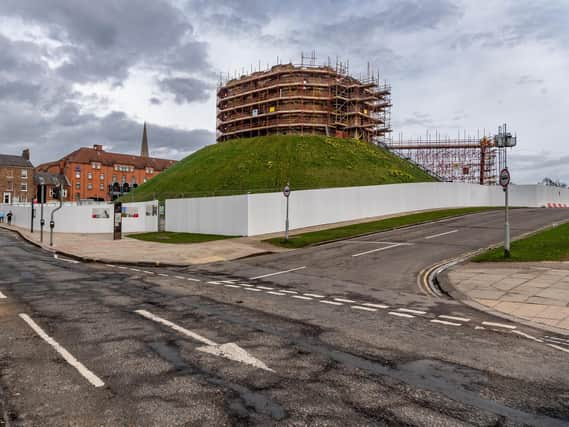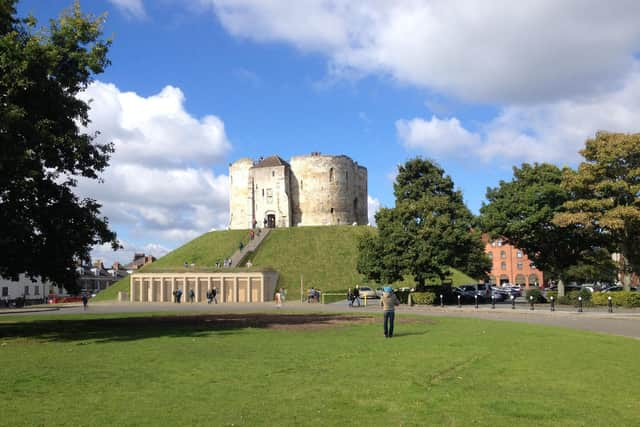Archaeologists working at Clifford's Tower make 'fascinating' discovery about landmark's history


The familiar yellow trumpets are already abundant, but this year a 6ft solid fence separates them from passers-by. Behind it, engineers and archeologists have been reconstructing the past life of one of the country’s oldest fortresses, and designing its future.
When it reopens later this year, two spiral staircases that have been inaccessible for centuries and a new network of internal walkways will make it possible to see the interior in a new light.
Advertisement
Hide AdAdvertisement
Hide AdIn the meantime, the unfamiliar scaffolding that temporarily surrounds the tower has made it a spring spectacle in its own right.


“Our archaeologists have been undertaking a six-week survey of the interior of the tower, and the process has been fascinating,” said Rachael Baldwin, project manager at English Heritage, which is overseeing the work.
"As York changed, so did Clifford’s Tower. We not only found the remains of a huge Victorian flagpole but also some fascinating finds which show how the site has been used since the 17th century, including when it was part of a garden."
On the outside, conservationists are repairing and repointing the tower’s stonework, arrow slits and fireplaces. Specialists will also work on the roof, replacing tiles to make it watertight and opening up new areas to visitors.
Advertisement
Hide AdAdvertisement
Hide AdUsing similar techniques to those employed at York Minster, builders are harnessing centuries-old methods to remove the old cement grout and replace it with a more sensitive lime mortar mixture.
Permission for the work was granted last year, following a protracted debate about a proposed visitor centre beneath the 13th century tower – the sole remaining part of York’s Royal castle.
English Heritage had wanted to install a concrete and glass shop, display area and cafe within the mound, which was raised by William the Conqueror. It withdrew the plans after archaeologists warned it would create “substantial harm” to one of England’s most significant ancient monuments.
“The visitor building would not have touched any of the medieval remains but like the wallpaper in our homes, that small mound is a deeply familiar backdrop and the thought of changing it – even slightly and even with the very best intentions – was too much for many,” Andrea Selley, English Heritage’s director for the North of England, said at the time.
Advertisement
Hide AdAdvertisement
Hide AdHowever, the organisation said conservation work on the tower was still necessary. “Before our project, a visit to the tower was far from ideal and did not reflect the site’s importance, both nationally and within the city of York,” it said.
“By making it easier to move around the tower, removing the unsightly temporary shop and providing new interpretation to tell the tower’s fascinating story, we will ensure that visitors get more from their time within the building.”
York Castle, of which Clifford’s Tower is the last remaining part, was once the centre of government for the North of England.
The original 11th-century timber tower was burned down in 1190, after York’s 150-strong Jewish community was besieged by a mob on the site and committed mass suicide. It went down as one of the most notorious events in the country’s history.
Advertisement
Hide AdAdvertisement
Hide AdThe present 13th-century stone tower was probably used as a treasury and later as a prison. It was not brought into public ownership until a century ago, at which point it was repaired and public access improved.